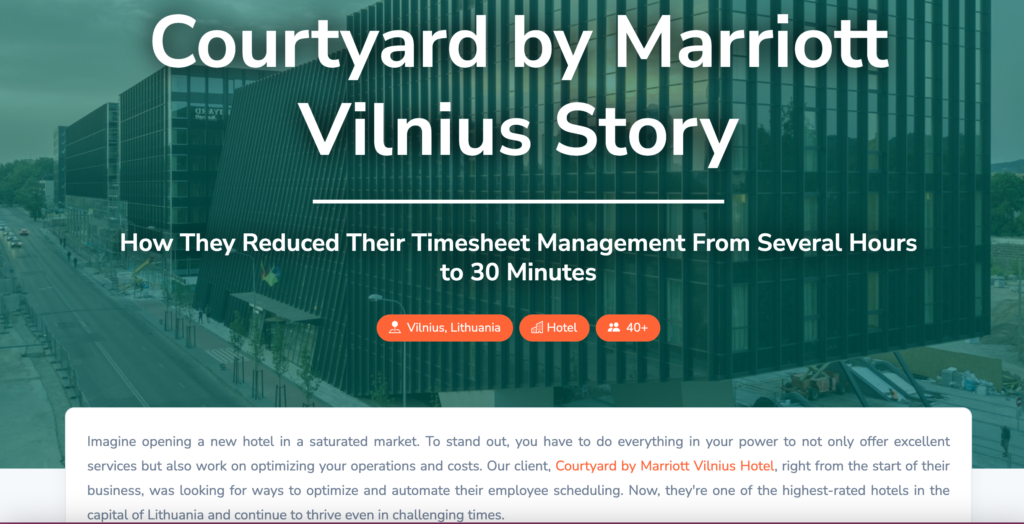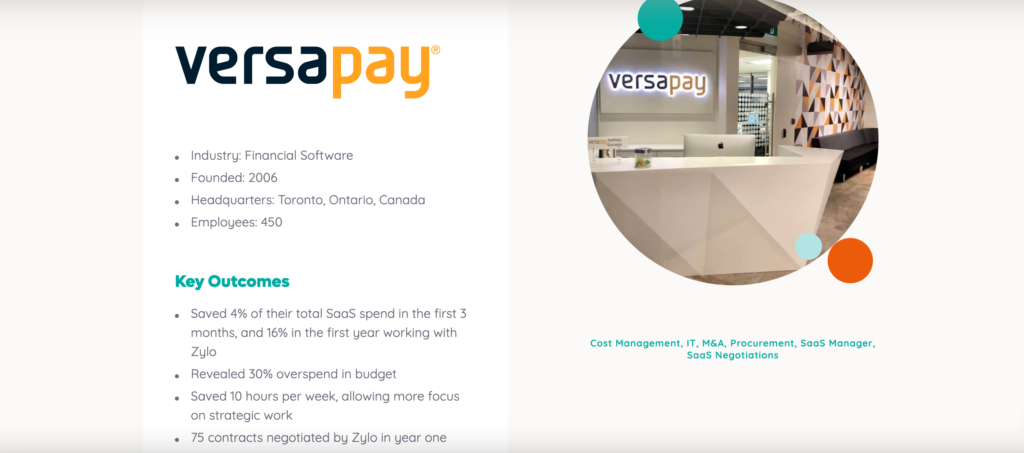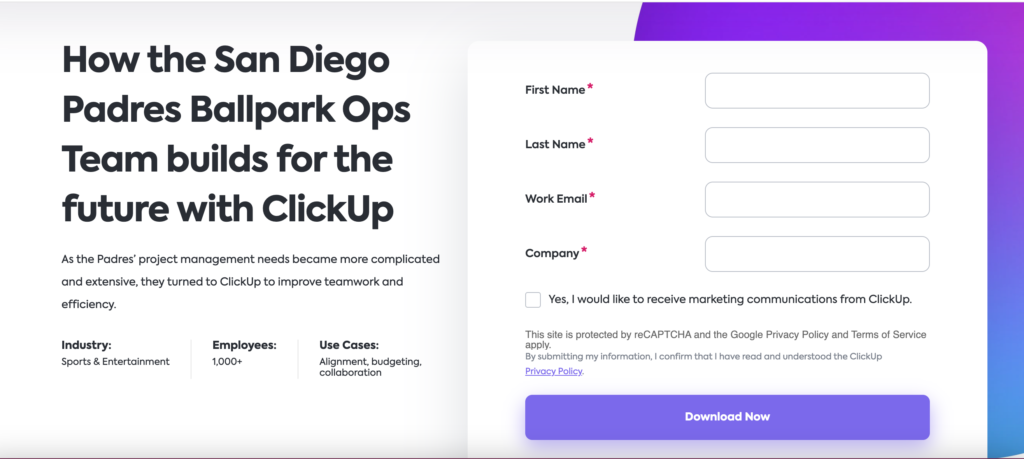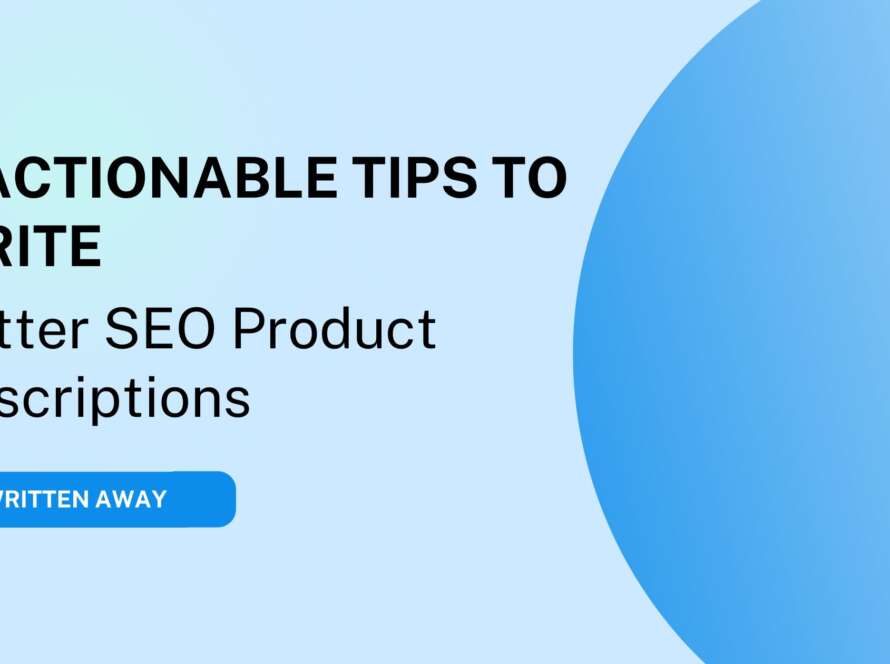
Writing a SaaS client case study isn’t rocket science, but there are certain strategies and formulas you can use to do justice to your clients and tell their success stories. As a B2B business, it’s your responsibility to write accurate and informative SaaS case studies so that potential clients can use this information as social proof before committing to your software.
In this article, you’ll find out what SaaS case studies are and how to build a strong case study for your clients.
- What are SaaS case studies?
- Do you actually need case studies on your website?
- How to build a strong client case study
- SaaS case study examples
- Let's write a great case study for your SaaS business
What are SaaS case studies?
SaaS case studies are stories about your customers and the benefits they’ve gained using your software solution.
You know how B2C businesses have customer reviews and ratings? Case studies are like reviews and Google ratings for B2B businesses.
By using a specific structure (that I’ll talk more about later), you build a story of the challenges your client had before they found you, the solutions you provided, and the results you achieved together.
Do you actually need case studies on your website?
If you regularly publish blog posts, post on social media, and send emails to your clients, you might wonder why you need yet another content piece. But case studies can be more helpful than any other piece of content you produce.
They usually stand in the middle of the buyer’s journey. That means when someone is reading your case stories, they are interested in your business enough to actually read it and try to see whether it would work for their business.
Use SaaS case studies to:
- Showcase real-life success stories of companies using your services
- Demonstrate how to use your product in real-life scenarios
- Build trust and credibility. Sometimes all it takes to finish a sale is social proof
- Show how different features work for specific business needs and industries
- Complement your other content, such as blog articles, social media posts, webinars, etc.
How to build a strong client case study

Find the right clients
Of course, all of your clients are amazing. But some might be better suited for building case studies than others.
The best client for a case study:
- Is willing to share their experience with you and contribute to the case study.
- Has seen consistent results and, better yet, measured them.
- Had very clear problems that your solution helped to solve.
- Matches your target. This means that you might be looking to market some features or focus on a specific industry or solutions that a case study would complement.
If your SaaS business serves multiple industries or provides several solutions, it’s good practice to find a client for each industry, feature, and solution.
Build a structure for your case study
The good thing about case studies is that you can use the same structure for all your clients. Once you build the structure, you just need to change the details and personalize the content to make it unique.
Headline
Keep the headline simple, clear, and precise. I like to include the client’s name (especially if it’s a well-known brand) and/or industry. You should also include the main benefit they gained from your software. It’s even better if you can use numbers.
For example: “How a Multinational Human Resource Company Increased Client Retention by 60%”
If the title is too long, I don’t write the name of the SaaS provider as it’s already in the text, URL, and everywhere on your website.
Otherwise, the title could go like “How (name of the company) Increased Client Retention by 60% with (SaaS solution)”
Short summary
Consider this brief introduction to your case study as an elevator pitch. The goal is to pique the reader’s interest to learn more or give them enough information that would satisfy their curiosity about the effectiveness of your SaaS.
Challenge(s)
How bad was it? Pretty bad… List all the challenges your client had before they found you. Make sure to list only relevant challenges and those that you actually solved or are working on solving. Present them one by one, be specific, and provide real examples and data if possible. However, this section might be tricky. You have to be careful not to make your client look bad.
For example, “As the business was growing, the client made more mistakes in their human resource processes.”
It’s better to be more neutral like this, “As the business was growing, the client needed more structure and automation in their human resource processes.”
Your solution
This section of a SaaS case study focuses on how the challenges were addressed:
- What was your plan to take on each challenge?
- What business processes or workflows did you establish?
- What configurations or settings did you use?
- Integrations and features.
In the solution part, I also add a bit of the backstory of how the client found this SaaS company. Perhaps the client came with a specific problem in mind, or you found them at a networking event.
Clarifying the beginning of your partnership makes it clearer for the reader how they can approach you.
In the same section, I’d also like to mention the onboarding process.
Be real.
How long did it take to onboard and train everyone to use your software? What techniques did you use to get everyone onboard to use your software? Just like the previous point, onboarding information makes your process clearer.
Fabulous results
The Results section of a SaaS case study showcases the outcomes. Include statistics, value statements, or testimonials to add credibility to your case study.
It’s great if you have precise numbers. If you don’t, don’t get discouraged. Not everyone tracks the results that each new tool provides. Instead, list facts of what happened, such as: “They reduced manual work; they got more time to focus on working with clients; they automated their project management processes; etc.”
Stay consistent and try to match the client’s challenges with the solutions and results.
If the client struggled with manual data input, you might have offered them workflow automation. As a result, they reduced manual work by X hours annually.
Quote from the client
That’s why in the beginning I mentioned that finding the right clients for SaaS case studies is key. It’s important to get the quote from the client, so readers don’t think you sugarcoated the whole story. Even a short quote can make the case story more credible.
Conclusion and call to action
You might be tempted to skip this part, but the conclusion is just as important as any other part of your SaaS case study. Wrap up everything you said and lead the reader to your call to action. Explain the following steps so the reader not only gets to know the results of your software but also understands how to achieve the same success.
Tell a little bit of their story
Case studies are like any other story. They have challenges, solutions, and resolutions. But so many amazing software companies present their client case studies as if they were washing machine manuals.
Even technical content can be interesting. Storytelling elements make it more compelling.
A great story is relatable. What problems did the company have, and how much did it affect them?
A great story has emotions. What happened because of those challenges? Maybe they lost clients or money.
That’s why I like to combine storytelling and pure facts in my SaaS case studies.
I like to use storytelling with a mix of bullet points to make case studies easier to follow and highlight the key points.
Here’s how it goes:
Start with the standard SaaS case study structure (challenges, solutions, results), but instead of writing raw facts, open with a little backstory and follow it up with a bullet list of challenges, solutions, and results.
This makes it easier not only to follow the text (we all know people just skim through the text) but also to keep a logical sequence of things, while engaging the reader.
Share your client stories with the world
Case studies are great because you can use and reuse them again and again. There are a few ways you can share or reuse your SaaS case studies:
- Add them to your articles. Google loves real-life examples. Your client case studies are a great source of first-hand experience. Use them as examples to prove your points, illustrate your process, and help potential clients understand how your product works.
- Great for backlinks. Getting quality backlinks isn’t an easy task. But when you publish a client case study, you can ask a client to link to it on their website, getting precious exposure and a backlink.
- Publish case studies on your social media. Case studies are great humble bragging material. You can post them on LinkedIn and invite your clients to repost them. This way, you can tap into two different networks and likely reach an audience that could become your potential clients.
- Include them in your emails. Adding case studies to your email automation can help you land a client. If you are warming up your subscribers to become clients, real-life examples can be a great way to show them your product actually works.
- Use them as social proof. Take parts of the story or quotes from your clients to add them throughout your website. Powerful landing pages should include testimonials from your clients.
- Create infographics. This one might be one of the later steps, but infographics are something every SaaS business should pay attention to. When you have enough data from your clients, you can create statistics-based infographics. Not only are they nicer to look at than plain text, but other websites also loooove to link to infographics as data sources. You know what that means? Yes, backlinks, baby.
SaaS case study examples
Here are some SaaS case studies worth mentioning.
OPTAS success stories

Okay, I’m not going to lie, they’re one of my dear clients. But their case story follows the structure and storytelling formula I was telling you about. You can see the text is full of visuals to make it more skimmable and real photos of the client to make the story credible and familiar.
Zylo case study

Their case study is a great example of storytelling, with facts presented nicely and credibility.
ClickUp story

This case study is short and sweet, but it shows that you don’t need to write 2000 words to show your client results.
Let’s write a great case study for your SaaS business
I hope that by now you have a better idea of why you should publish case studies on your website. But having raw data about your clients doesn’t look that good. That’s why you need a professional writer to write you a story. If you’re searching for a professional SaaS copy and content writer, look no further. I help companies like yours write content that not only compels your audience but also appears on search engines. Let’s talk about how we can work together!


